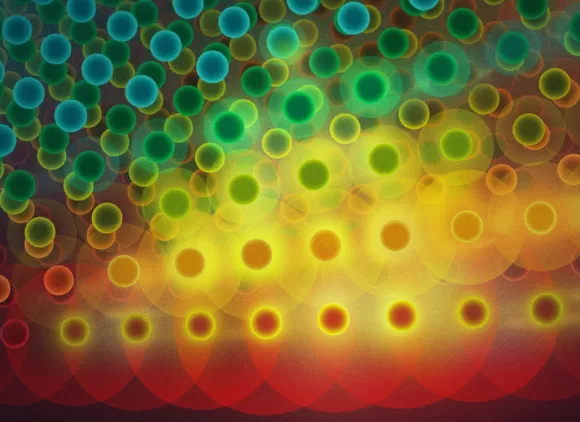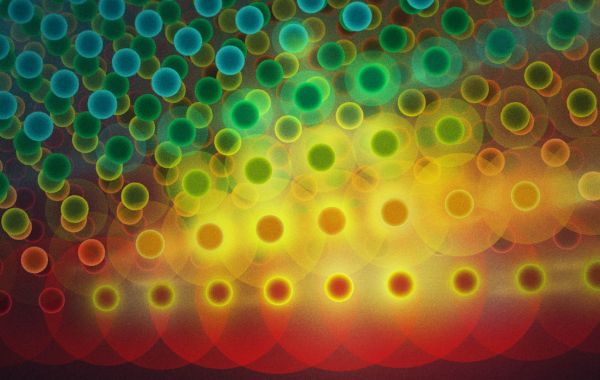About the series
(Visitors: Please contact Carlos Murillo cmurillo@nsf.gov in advance to arrange for a visitor pass. Also, please consult the "Visit NSF" information page prior to your visit.)
ABSTRACT
Among the planets we know, Earth is the only one that has an atmosphere of molecular nitrogen and oxygen (~3:1). This mix, along with water, moderate temperatures, and time is a recipe for all life as we know it. This diatomic nitrogen is very unreactive under normal laboratory conditions. Only a few enzymes in biological systems are capable of fixation whereby the triple bond between nitrogen atoms in the gas is broken and small molecules such as ammonia are produced. These species are then used by other plants generating a myriad of nitrogen-containing species, many of which such as proteins are essential to life. Industrially, ammonia is produced in millions of tonnes to be used mostly as a fertilizer using the Haber-Bosh (HB) process. However, this is a very energy-intensive, polluting process. Reaction of molecular nitrogen with hydrogen requires huge volumes of the latter, which is now made from methane. The byproduct is carbon dioxide (~3×108 tons per year) which is released to the atmosphere.
For 50 years the search has been on to discover how Nature manages this result at ambient temperature and pressure and in particular how formation of (energetically wasteful) hydrogen through a reaction between a proton and an electron can be avoided in the process. Buildup of CO2 in the atmosphere has made this quest more urgent. In theory, it should be possible to prepare protons and electrons in a solar process and form and store the ammonia made with them as a future fuel, fertilizer, or as a source of hydrogen through a "reverse" HB process. The first "abiological" catalytic reduction of nitrogen to ammonia with protons and electrons was demonstrated in 2003 using a molybdenum catalyst, but the number of catalytic turnovers (TONs) was low (~4). Today there are systems whose TONs are ten times that or more using Mo, Fe, or Os catalysts. The complex challenge is how to develop an efficient catalyst and process that will make room temperature CO2-free synthesis of ammonia a reality.
Prof Schrock’s laboratory has been making efforts to find ways to accelerate the process while diminishing the energy requirements by exploring new catalysts. During the seminar this Nobel laurate will show how molybdenum containing compounds behave in reactions with nitrogen. Results from his laboratory will be contrasted and compared with published catalyst systems. In all systems metallocenes are the optimum reducing agents and amines or anilinium salts are the proton sources.
BIOGRAPHICAL INFORMATION
He was born in the humble Indiana farming community of Berne where his carpenter father owned a woodworking shop. Prof Schrock got hooked into chemistry when his older brother gave him a chemistry set for his eighth birthday. After his family moved to California, he chose to go to UC Riverside bypassing an offer from Berkeley. After obtaining a BS, he went to Harvard for his graduate studies. These were some crazy days and so he decided to take a break to travel in Europe on a $5-a-day budget. He then returned and finished his PhD. With an NSF-sponsored postdoctoral fellowship he went to Cambridge University to work with Jack (The Lord) Lewis. Back in the US, he accepted a position at the DuPont Central Research Laboratory. Finally, he was convinced to move to MIT in 1975 where he is now a full professor. In 2005, he was awarded the Nobel Prize in Chemistry, a prize shared with Yves Chauvin and Robert Grubbs “for the development of the metathesis method in organic synthesis.” The title of the Nobel lecture was “Metal-carbon bonds for catalytic metathesis reactions”
In addition to the Nobel prize, Prof Schrock has received numerous awards including the ACS Award in Organometallic Chemistry (1985), ACS Award in Inorganic Chemistry (1996), Sir Geoffrey Wilkinson Lecturer and Medalist (2002), F. Albert Cotton Award in Synthetic Inorganic Chemistry (2006). He is also a foreign member of Royal Society and has been a member of the US Academy of Sciences since 1992.
His research is focused in (1) synthesis and mechanisms of alkylidyne complexes, (2) olefin metathesis in organic chemistry and (3) olefin metathesis in polymer chemistry. He has been venturing in the area of catalytic nitrogen fixation, which is the topic of his NSF lecture. He has masterfully created bulky molecules that protect the metal centers responsible for the mild catalytic reduction of nitrogen. In his words, he continues to unlock nature’s secrets, an enormously satisfying profession.


